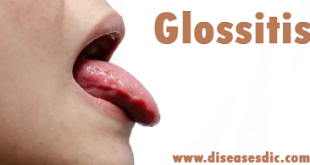Definition
Kawasaki disease causes inflammation in the walls of medium-sized arteries throughout the body. It primarily affects children. The inflammation tends to affect the coronary arteries, which supply blood to the heart muscle. Kawasaki disease is sometimes called mucocutaneous lymph node syndrome because it also affects lymph nodes, skin, and the mucous membranes inside the mouth, nose and throat. Signs of Kawasaki disease, such as a high fever and peeling skin, can be frightening. The good news is that Kawasaki disease is usually treatable, and most children recover from Kawasaki disease without serious problems.
Kawasaki Disease
History
The disease was first reported by Tomisaku Kawasaki in a four-year-old child with a rash and fever at the Red Cross Hospital in Tokyo in January 1961, and he later published a report on 50 similar cases. Later, Kawasaki and colleagues were persuaded of definite cardiac involvement when they studied and reported 23 cases, of which 11 (48%) patients had abnormalities detected by an electrocardiogram. In 1974, the first description of this disorder was published in the English-language literature. In 1976, Melish et al. described the same illness in 16 children in Hawaii. Melish and Kawasaki had independently developed the same diagnostic criteria for the disorder, which are still used today to make the diagnosis of classic Kawasaki disease.
A question was raised whether the disease only started during the period between 1960 and 1970, but later a preserved heart of a seven-year-old boy who died in 1870 was examined and showed three aneurysms of the coronary arteries with clots, as well as pathologic changes consistent with Kawasaki disease. Kawasaki disease is now recognized worldwide. In the United States and other developed nations, it appears to have replaced acute rheumatic fever as the most common cause of acquired heart disease in children.
Epidemiology
Kawasaki disease affects boys more than girls, with people of Asian ethnicity, particularly Japanese and Korean people, most susceptible, as well as people of Afro-Caribbean ethnicity. The disease was rare in Caucasians until the last few decades, and incidence rates fluctuate from country to country.
Currently, Kawasaki disease is the most commonly diagnosed pediatric vasculitis in the world. By far, the highest incidence of Kawasaki disease occurs in Japan, with the most recent study placing the attack rate at 218.6 per 100,000 children <5 years of age (about one in 450 children). At this present attack rate, more than one in 150 children in Japan will develop Kawasaki disease during their lifetimes.
However, its incidence in the United States is increasing. Kawasaki disease is predominantly a disease of young children, with 80% of patients younger than five years of age. About 2,000-4,000 cases are identified in the U.S. each year (9 to 19 per 100,000 children younger than 5 years of age).
In the United Kingdom, estimates of incidence rate vary because of the rarity of Kawasaki disease. However, it is believed to affect fewer than one in every 25,000 people. Incidence of the disease doubled from 1991 to 2000, however, with four cases per 100,000 children in 1991 compared with a rise of eight cases per 100,000 in 2000.
In the continental United States, Kawasaki Disease is more common during the winter and early spring, boys with the disease outnumber girls by ≈1.5–1.7:1, and 76% of affected children are <5 years of age.
Risk factors of kawasaki disease
Age: It is more likely between the ages of 1 year and 5 years
Gender: Boys are more likely than girls to develop it
Ethnic background: People of Asian ancestry, specifically Japanese or Chinese, and Black Americans are more susceptible to Kawasaki disease
Genetics: If the parents had Kawasaki disease, their offspring may be more likey to have it, suggesting that it may be linked to an inherited gene
Environment: In the northern hemisphere, from January through March, the rate is 40 percent higher than in August through October.
Some suggest it may be a reaction to some toxins or medications, but clinical evidence is lacking.
Causes
The cause of Kawasaki disease is not completely known. There are a number of theories regarding the cause, but so far, none have been proven. Some believe that the disease is caused by an infection since outbreaks are commonly clustered and appear similar to other infectious diseases (abrupt onset, fever, rapid resolution of symptoms within one to three weeks). It is commonly thought that a bacterial toxin, acting as a disease trigger, initiates the disease. This toxin may come from common bacterial infections in children, such as Staphylococcus or Streptococcus
Symptoms of kawasaki disease
The disease usually begins with a high fever (over 39ºC) which continues for at least five days.
Many, but not all, children also develop other symptoms such as:
- Large, swollen glands in the neck
- A rash that often peels later on in the illness
- Red, shiny or dry, cracked lips
- Red, lumpy (strawberry looking) tongue
- Red eyes (conjunctivitis) without discharge
- Swollen, red hands or feet
- An unusual nappy rash
- Joint pains
- Extreme irritability (especially in young children).
Other diseases can be confused with Kawasaki disease. They may require different treatment.
The most important part of Kawasaki disease is that it may cause inflammation of the arteries that supply blood to the heart, which can result in an aneurysm (an excessive localized swelling of the wall of an artery) that can cause heart problems in the future. This occurs in about 25 per cent of patients if they do not receive treatment.
A rash that often peels later on in the illness
Complications of kawasaki disease
KD leads to serious heart problems in about 25 percent of the children who have the disease. Untreated KD can lead increase your risk for a heart attack and cause:
- Myocarditis, or inflammation of the heart muscle
- Dysrhythmia, or an abnormal heart rhythm
- Aneurysm, or weakening and bulging of the artery wall
Treatment for this stage of the condition requires long-term dosing of aspirin. Patients may also need to take blood thinners or undergo procedures such as coronary angioplasty, coronary artery stenting, or coronary artery bypass. Children who develop coronary artery problems due to KD should take care to avoid lifestyle factors that can increase their risk for a heart attack. These factors include being obese or over weight, having high cholesterol, and smoking.
Diagnosis and test
There’s no specific test available to diagnose Kawasaki disease. Diagnosis largely is a process of ruling out diseases that cause similar signs and symptoms, including:
- Scarlet fever, which is caused by streptococcal bacteria and results in fever, rash, chills and sore throat
- Juvenile rheumatoid arthritis
- Stevens-Johnson syndrome, a disorder of the mucous membranes
- Toxic shock syndrome
- Measles
- Certain tick-borne illnesses, such as Rocky Mountain spotted fever
The doctor will do a physical examination and have your child take other tests to help in the diagnosis. These tests may include:
Urine tests: These tests help rule out other diseases.
Blood tests: Besides helping to rule out other diseases, blood tests look at white blood cell count, which is likely to be elevated, and the presence of anaemia and inflammation, indications of Kawasaki disease.
Testing for a substance called B-type natriuretic peptide (BNP) that’s released when the heart is under stress may be helpful in diagnosing Kawasaki disease earlier, recent research found. But, more research is needed to confirm this finding.
Electrocardiogram: This test uses electrodes attached to the skin to measure the electrical impulses of your child’s heartbeat. Kawasaki disease can cause heart rhythm complications.
Echocardiogram: This test uses ultrasound images to show how well the heart is functioning and can help identify coronary artery abnormalities, if present.
Treatment and medications
Kawasaki disease is usually treated in hospital, because of the risk of complications. Prompt treatment increases the chance of a faster recovery and reduces the risk complications.
Some medications are used in treatment.
Aspirin: Kawasaki disease leads to a very high blood platelet count, and a higher risk of clots forming in the bloodstream. Aspirin helps prevent blood clots and reduces the fever, rash and joint inflammation. A high dose will normally be necessary.
The patient must be monitored for undesirable side effects. Aspirin therapy may continue for several weeks after recovery from symptoms.
Intravenous immunoglobulin (IVIG): This decreases the risk of coronary aneurysms, but how it works remains unclear.
Corticosteroids and tumor necrosis factor inhibitors: These may be used if other therapies do not work.
The patient must receive plenty of fluids, to avoid dehydration.
After initial treatment
There will be some longer term treatment.
If a coronary artery aneurysm develops, aspirin treatment will continue for longer, but if the patient develops flu or chickenpox during treatment they will have to stop taking aspirin.
Although heart problems are rare, it is crucial to monitor the heart.
If there are any indications of heart problems, the doctor may order follow-up tests, usually 6 to 8 weeks after symptoms started.
If the heart problems persist, the doctor may refer the patient to a pediatric cardiologist, a doctor specialized in diagnosing and treating childhood heart problems.
The following may be necessary:
- Anticoagulant medications, such as warfarin, heparin, or aspirin, to prevent blood clots
- Coronary artery angioplasty, a procedure opens up an artery that has narrowed by inflating a small balloon inside the artery
- Alongside the angioplasty, a stent may be placed in a clogged artery to help prop it open, reducing the risk of it blocking again
In a coronary artery bypass graft, blood flow is rerouted round a diseased coronary artery by grafting a section of blood vessel from the chest, arm or leg to use as the alternate route.
The bypass goes round the blocked artery, allowing blood to pass through into the heart muscle.
Prevention of kawasaki disease
There are no preventive measures for this disease. Only about one child in hundred develops this disease for the second time. Try to collect as much information possible about the disease so that you can know about the treatment options and other measures to be taken. The children who are affected with this disease can recover completely if proper treatment is given.
 Diseases Treatments Dictionary This is complete solution to read all diseases treatments Which covers Prevention, Causes, Symptoms, Medical Terms, Drugs, Prescription, Natural Remedies with cures and Treatments. Most of the common diseases were listed in names, split with categories.
Diseases Treatments Dictionary This is complete solution to read all diseases treatments Which covers Prevention, Causes, Symptoms, Medical Terms, Drugs, Prescription, Natural Remedies with cures and Treatments. Most of the common diseases were listed in names, split with categories.







